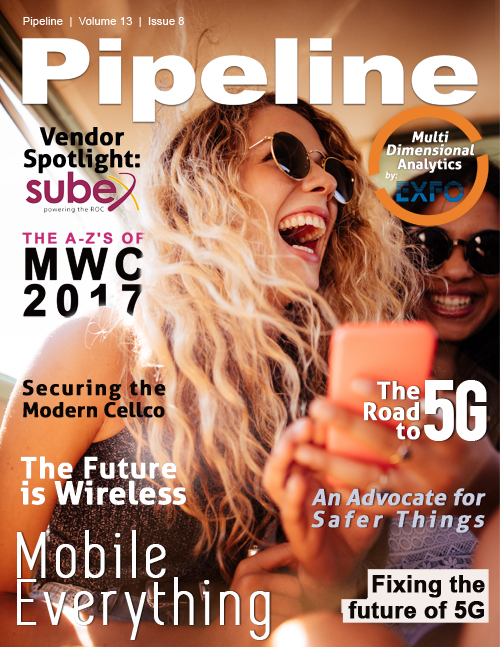Fixing the future of 5G
By: Jaime Fink

The telecom industry has set its sights on delivering a 5G future. The fifth generation of wireless technology promises to be significantly faster than the current 4G standard, and to connect more complex data-intensive fixed and mobile applications with little or no latency. Internet service providers (ISPs) are now weighing up their options for deploying 5G as quickly and efficiently as possible in order to leverage the benefits.
Against expectations, fixed-broadband adoption is increasing rapidly. Meanwhile, in developed markets like the UK, mobile data usage has slipped to represent only 5 percent of total internet traffic, according to recent research by 451 Group. This is because the consumer value per gigabyte is significantly more expensive on mobile versus broadband internet. Subsequently, the industry is seeing mobile providers are moving to fixed broadband solutions to remain competitive
The wireless answer for 5G
The standards for 5G have yet to be defined in the mobile realm, but this has not deterred ISPs and vendors, which have already begun testing the technology in order to influence its introduction. Early tests from Verizon, AT&T, U.S. Cellular and Nokia in North America suggest that whereas 4G was a pure mobile play, 5G will initially be deployed purely for fixed wireless applications.
Verizon’s CEO Lowell McAdam stressed that this is because fixed wireless offers ISPs “the return on capital you need” Expanding on Verizon’s rationale, McAdam further explained that “connecting consumers and businesses to a fiber network is expensive, and it's possible to reduce that cost by getting a fiber connection within 1,000 meters of a building and then connecting that building to the fiber network wirelessly via a 5G router on the outside of the building.”
Indeed, fixed wireless provides high-performance connectivity that can be established and scaled at ease, at a low price point. It is the obvious choice for commercialising 5G within a strict time frame. The next step for the industry is to define which wireless bands are most appropriate for fixed wireless applications.
Testing the viability of the mmWave spectrum
In 2016, there was a concerted effort to raise the profile of the high-frequency mmWave spectrum (above 24GHz), to prove its viability with 5G players. Verizon has begun tests using the 28GHz spectrum after the U.S. Federal Commission opened it up for commercial use, in addition to a number of other frequency bands including 70GHz. However, the viability of these bands should now be scrutinised for both mobile and fixed applications, and whether integrating handset and home solutions in common infrastructure and spectrum makes sense at all.
The mmWave spectrum has been proven as successful for point-to-point infrastructure links that have total line-of-sight, as demonstrated by companies such as Webpass, which was acquired by Google. However, delivering mmWave broadband connectivity in non-line-of-sight (NLOS) environments, such as suburban areas, is extremely problematic over the last quarter mile. This is because signals can be affected by environmental factors such as foliage. This is typically found in suburban areas, where almost 80% of the U.S. citizens reside. In higher frequency bands, weather can also negatively impact signal propagation, disrupting connectivity.





















